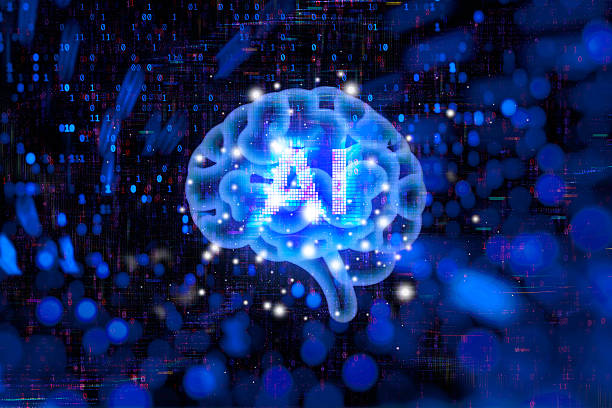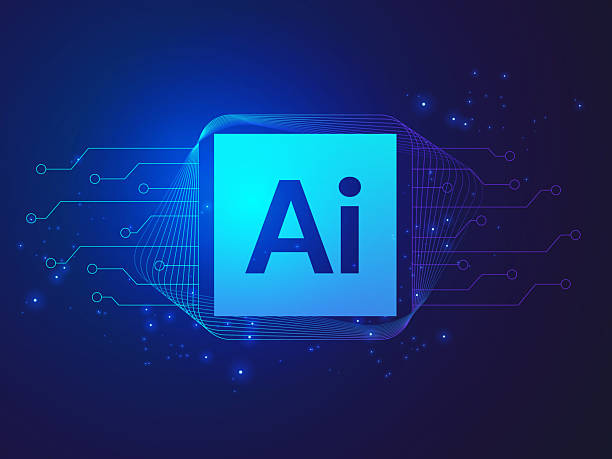What is Artificial Intelligence? Definition, History, and Basic Concepts
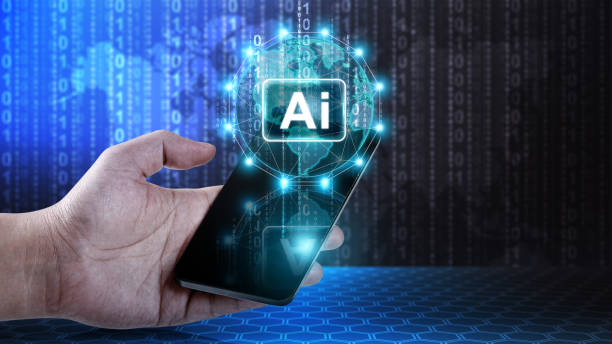
#Artificial_Intelligence (AI) is a branch of computer science dedicated to building machines capable of performing tasks that typically require human intelligence.
This includes learning, reasoning, problem-solving, natural language understanding, and pattern recognition.
The history of artificial intelligence dates back to the 1950s when researchers began exploring the possibility of creating thinking machines.
The term “Artificial Intelligence” was first coined by John McCarthy in 1956.
Basic concepts in artificial intelligence include machine learning algorithms, neural networks, natural language processing (NLP), and computer vision.
Machine learning enables machines to learn from data without being explicitly programmed.
Neural networks are models inspired by the structure of the human brain, used for pattern recognition and prediction.
Natural language processing allows machines to understand and generate human language.
Computer vision enables machines to understand and interpret images.
Artificial intelligence and its applications are currently used in many fields, including medicine, finance, transportation, and manufacturing.
With technological advancements, it is expected that artificial intelligence will play an even more significant role in our lives.
Are you tired of your company’s website not meeting your expectations? With RasaWeb, design a professional website that truly represents your business.
✅ Increase attraction of new customers and sales leads
✅ Boost your brand’s credibility and trust among your audience
⚡ Get a free website design consultation!
Types of Artificial Intelligence: From Simple Systems to General Intelligence
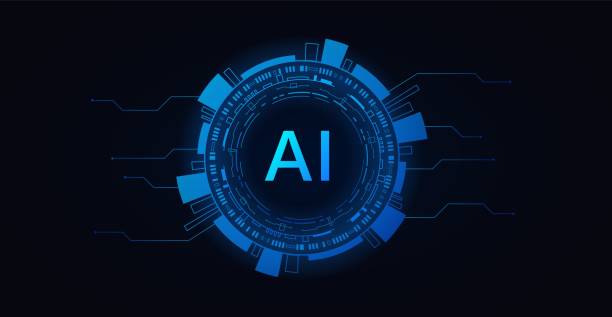
Artificial intelligence can be categorized into various types based on its capabilities and functionalities.
One of the most common classifications distinguishes between Narrow AI, General AI, and Super AI.
Narrow AI: This type of artificial intelligence is designed to perform a specific task and excels at that task.
Examples of Narrow AI include facial recognition systems, voice assistants like Siri and Alexa, and recommendation algorithms on online platforms.
These systems are only capable within their defined domain.
General AI: This type of artificial intelligence possesses the ability to perform any intellectual task that a human can.
In other words, General AI can learn, understand, and reason, just like a human.
General AI has not yet been fully realized, but achieving it is the goal of much research in this field.
Super AI: This type of artificial intelligence surpasses human intelligence and can outperform humans in all areas.
The existence of Super AI is still hypothetical, and its implications for humanity are unknown.
Developing Super AI requires a complete understanding of human thought and learning mechanisms, something that is not yet fully understood.
Artificial intelligence and its development can bring about massive transformations in our lives, but it must be approached with caution and responsibility.
Machine Learning: The Beating Heart of Modern AI
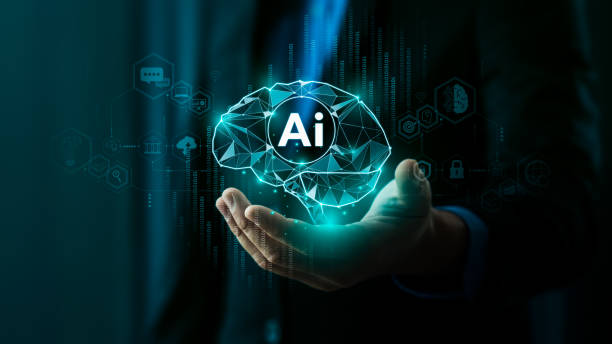
Machine Learning is a subset of artificial intelligence that enables systems to learn from data and improve their performance without explicit programming.
This process involves using algorithms that identify patterns in data and make predictions or decisions based on them.
There are various types of machine learning algorithms, including Supervised Learning, Unsupervised Learning, and Reinforcement Learning.
Supervised Learning: In this method, the algorithm is trained using labeled data.
This means that each input has a corresponding output.
The goal of the algorithm is to learn a function that can map inputs to correct outputs.
Examples of supervised learning include Classification and Regression.
Unsupervised Learning: In this method, the algorithm is trained using unlabeled data.
The goal of the algorithm is to discover hidden patterns and structures in the data.
Examples of unsupervised learning include Clustering and Dimensionality Reduction.
Reinforcement Learning: In this method, the algorithm learns by interacting with an environment and receiving rewards or penalties.
The goal of the algorithm is to learn a policy that can maximize the reward.
Examples of reinforcement learning include computer games and robotics.
| Machine Learning Algorithm | Learning Type | Application |
|---|---|---|
| Linear Regression | Supervised | House price prediction |
| K-means Clustering | Unsupervised | Customer segmentation |
| Deep Learning | Supervised/Unsupervised | Image recognition, Natural Language Processing |
Machine learning plays a vital role in the advancement of artificial intelligence and is used in many fields such as medicine, finance, and autonomous vehicles.
Deep Neural Networks: Modeling the Human Brain for AI

Deep Neural Networks are a type of artificial neural network composed of multiple hidden layers.
These layers enable the system to identify more complex patterns in data.
Deep neural networks are inspired by the structure and function of the human brain and perform exceptionally well in many areas, such as image recognition, natural language processing, and speech recognition.
Each layer in a deep neural network consists of numerous nodes (neurons) connected to other layers.
Each connection has a weight that indicates its importance.
When an input is fed into the network, each node calculates a value and transmits it to the nodes in the next layer.
This process continues until the output layer, where the final result is calculated.
Deep neural networks require a large volume of data for training.
This data is used to adjust the weights of the connections so that the network can learn the patterns present in the data.
The training process for deep neural networks can be very time-consuming and costly, but the results are usually very valuable.
Deep neural networks are used in many AI applications, including:
- Image recognition: Identifying objects and faces in images
- Natural Language Processing: Language translation, text generation, and understanding human language
- Speech recognition: Converting speech to text
Deep neural networks are recognized as one of the most important technologies in artificial intelligence and are expected to play an even greater role in the future development of this field.
These systems, with their ability to learn complex patterns, enable machines to perform tasks that were previously only possible for humans.
Research shows that 80% of customers trust companies with professional websites more. Does your current site inspire this trust?
With RasaWeb’s corporate website design services, permanently solve the problem of customer distrust and a weak online image!
✅ Create a professional image and increase customer trust
✅ Attract more sales leads and grow your business
⚡ Get a free consultation
Natural Language Processing: A Bridge Between Humans and Machines

Natural Language Processing (NLP) is a branch of artificial intelligence that enables machines to understand and generate human language.
This includes semantic and structural analysis of language, language translation, text generation, and answering questions.
NLP plays an important role in human-machine interaction and is used in many applications such as voice assistants, machine translation, and sentiment analysis.
The main challenges in natural language processing include linguistic ambiguity, linguistic variation, and context dependency.
Linguistic ambiguity means that a sentence can have different meanings, depending on the context and how it is used.
Linguistic variation means that human language is highly diverse, with various ways to express a concept.
Context dependency means that the meaning of a sentence can change depending on the context.
To address these challenges, natural language processing algorithms use various techniques such as machine learning, neural networks, and linguistic rules.
These algorithms analyze the structure and meaning of language to try and understand the speaker’s intent and purpose.
Applications of Natural Language Processing:
- Voice assistants: Such as Siri and Alexa, which allow users to interact with their devices using voice.
- Machine translation: Automatic translation of text from one language to another.
- Sentiment analysis: Detecting emotions in text, such as positive, negative, or neutral.
- Text summarization: Generating short summaries of long texts.
- Chatbots: Conversational systems that can answer user questions and assist them.
Natural language processing is recognized as one of the most important technologies in the field of artificial intelligence and is expected to play an even more significant role in our lives in the future.
AI, by improving human-machine interaction, helps us to perform our tasks more effectively and efficiently.
Applications of Artificial Intelligence in Various Industries: From Medicine to Transportation
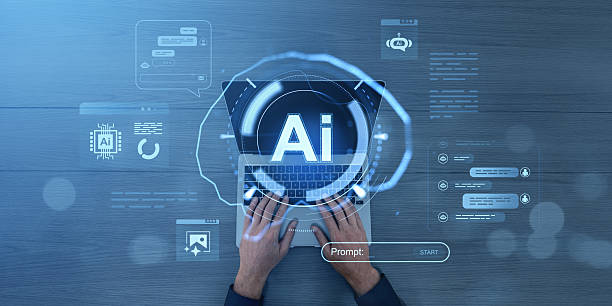
Artificial intelligence is currently used in many different industries and has had a significant impact on them.
From medicine and finance to transportation and manufacturing, AI helps improve efficiency, accuracy, and innovation.
Medicine: Artificial intelligence is used in disease diagnosis, drug development, and providing personalized healthcare.
Machine learning algorithms can analyze medical images and diagnose diseases with higher accuracy.
Additionally, AI can assist in drug discovery and the development of new treatments.
Finance: Artificial intelligence is used in fraud detection, risk management, and providing personalized financial services.
Machine learning algorithms can identify suspicious patterns in financial transactions and prevent fraud.
Additionally, AI can assist in risk assessment and providing personalized investment advice.
Transportation: Artificial intelligence is used in the development of self-driving cars, route optimization, and improving transportation safety.
Autonomous vehicles use computer vision and machine learning algorithms to understand their surroundings and drive without human intervention.
Additionally, AI can assist in route optimization and reducing traffic.
Manufacturing: Artificial intelligence is used in process automation, quality control, and predictive maintenance of equipment.
AI-powered robots can perform repetitive and dangerous tasks.
Additionally, AI can assist in quality control and predicting equipment failures to prevent production downtime.
Other Industries: Artificial intelligence also has applications in many other industries, including education, agriculture, and entertainment.
By improving processes and offering innovative solutions, this technology helps companies become more competitive and efficient.
| Industry | AI Application | Benefits |
|---|---|---|
| Medicine | Disease diagnosis | Increased accuracy and speed of diagnosis |
| Finance | Fraud detection | Reduced financial losses |
| Transportation | Self-driving cars | Reduced accidents and traffic |
Challenges and Limitations of Artificial Intelligence: From Data Bias to Ethical Concerns

Artificial intelligence, despite significant advancements, faces numerous challenges and limitations.
These challenges include data bias, lack of interpretability, ethical concerns, and security issues.
Data Bias: Machine learning algorithms learn based on the data they are provided.
If this data contains bias, the algorithm will also learn that bias and produce inaccurate results.
For example, if a facial recognition algorithm is trained using data predominantly featuring white individuals, it may perform poorly in recognizing faces of people of color.
Lack of Interpretability: Many machine learning algorithms, especially deep neural networks, are known as “black boxes.”
This means it is difficult to understand how the algorithm arrived at a particular result.
This can create problems in fields such as medicine and law, where the reason for a decision needs to be transparent.
Ethical Concerns: The use of artificial intelligence can raise numerous ethical issues.
For example, the use of AI in social surveillance and control can violate human rights.
Additionally, the use of AI in critical decisions such as hiring and resource allocation can lead to discrimination and injustice.
Security Issues: AI systems can be targets of cyberattacks.
For example, an attacker could manipulate training data to make the algorithm produce incorrect results.
Additionally, an attacker could exploit security vulnerabilities in AI systems to gain access to sensitive information.
To address these challenges, AI researchers and developers must seriously consider ethical and security issues and strive to develop algorithms that are fairer, more transparent, and more secure.
Furthermore, laws and regulations regarding the use of artificial intelligence must be established to prevent the misuse of this technology.
The Future of Artificial Intelligence: Prospects and Possibilities Ahead
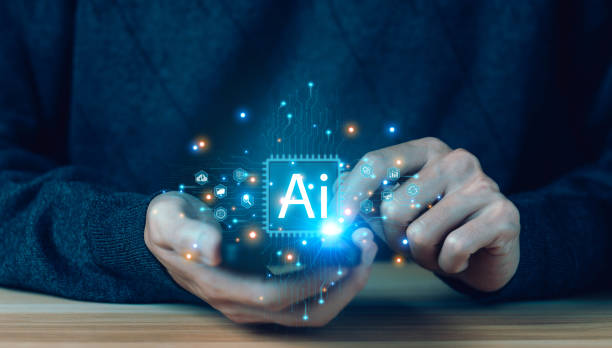
The future of artificial intelligence is full of prospects and possibilities.
With technological advancements, AI is expected to play an increasingly important role in our lives and bring about massive transformations in many areas.
One of the most important prospects for AI is the development of Artificial General Intelligence (AGI).
AGI is a system that can perform any intellectual task that a human can.
If AGI is realized, it could have a profound impact on society and help solve many global problems.
Another prospect for AI is the development of intelligent robots.
Intelligent robots can assist humans in many areas, such as manufacturing, services, and healthcare.
Additionally, intelligent robots can work in dangerous and inaccessible environments for humans.
Artificial intelligence can also bring about massive transformations in areas such as education, art, and entertainment.
Intelligent educational systems can help students learn in a personalized way.
Additionally, AI can play a role in generating artistic works and entertaining content.
However, the development of artificial intelligence also comes with challenges and risks.
It is necessary to seriously address the ethical and security issues of AI and strive to prevent the misuse of this technology.
The future of artificial intelligence is uncertain, but given the significant advancements in this field, it can be expected that AI will play a more important role in our lives and help solve many global problems.
However, it is necessary to approach the development of this technology with caution and responsibility to prevent its potential risks.
Artificial intelligence
Did you know that 85% of customers check your company’s website before any interaction?
With RasaWeb, build a corporate website that reflects your credibility.
✅ Increase credibility and customer trust
✅ Attract high-quality leads
⚡ Get a free website design consultation
Artificial Intelligence and Its Impact on the Job Market: Opportunities and Threats
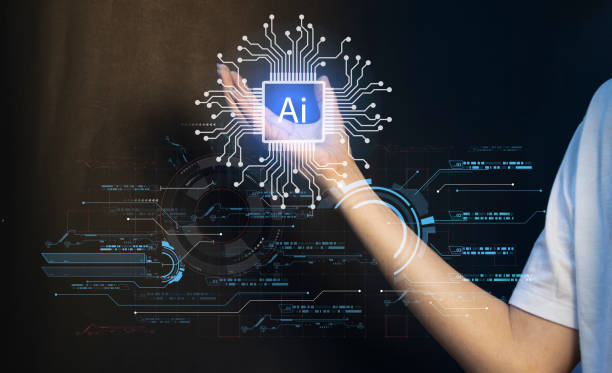
Artificial intelligence has a significant impact on the job market, encompassing both opportunities and threats.
On one hand, AI can lead to the creation of new jobs and increased productivity.
On the other hand, AI can result in the loss of some jobs and increased economic inequality.
Opportunities: Artificial intelligence can create new jobs in areas such as software development, data analysis, and AI systems management.
Additionally, AI can help humans perform their tasks more effectively and efficiently, which can lead to increased productivity and economic growth.
Threats: Artificial intelligence can lead to the loss of some jobs, especially those that are repetitive and routine.
For example, robots and AI systems can perform many tasks related to manufacturing, customer service, and accounting.
This can result in increased unemployment and economic inequality.
To address these threats, governments and companies need to adopt policies that help workers acquire new skills and adapt to changes in the job market.
Additionally, social support systems need to be strengthened to assist individuals who lose their jobs.
Artificial intelligence and its impact on the job market is a complex issue that requires careful consideration and planning.
By adopting appropriate policies, the opportunities of AI can be leveraged and its threats mitigated.
Artificial intelligence, by changing how we work and live, requires preparedness and adaptation.
How to Learn Artificial Intelligence? Resources and Learning Paths

Learning artificial intelligence can be a challenging but very rewarding process.
Given the rapid growth of this field, numerous resources and learning paths are available.
Here, we will mention some of these resources and paths:
Online Courses: Online learning platforms such as Coursera, edX, and Udacity offer numerous courses in artificial intelligence and machine learning.
These courses are typically taught by professors from reputable universities and include theoretical and practical topics.
Books: Many books on artificial intelligence and machine learning can help you learn basic and advanced concepts.
Some famous books in this field include “Artificial Intelligence: A Modern Approach” and “Machine Learning” by Tom Mitchell.
Practical Projects: One of the best ways to learn artificial intelligence is by undertaking practical projects.
You can implement machine learning algorithms using available data and evaluate your results.
This helps you apply theoretical concepts in practice and strengthen your skills.
Online Communities: Online communities like Stack Overflow and Reddit can be valuable resources for learning artificial intelligence.
You can ask your questions in these communities and benefit from the experiences of others.
Free Resources: Numerous free resources are available for learning artificial intelligence, including scientific articles, blogs, and video tutorials.
You can use these resources to expand your knowledge in the field of AI.
To start learning artificial intelligence, you can familiarize yourself with basic concepts such as machine learning, neural networks, and natural language processing.
Then, you can expand your knowledge in these areas using the mentioned resources.
Additionally, it is recommended to participate in practical projects and strengthen your skills.
Frequently Asked Questions
| Question | Answer |
|---|---|
| What is the definition of Artificial Intelligence (AI)? | It is a field in computer science aimed at creating intelligent machines that can think, learn, solve problems, and make decisions like humans. |
| Mention some common applications of Artificial Intelligence. | These include self-driving cars, voice assistants (such as Siri and Alexa), recommendation systems (such as Netflix and Amazon), facial recognition, and medical diagnosis. |
| What is the difference between Narrow AI (ANI) and General AI (AGI)? | Narrow AI is specialized in one specific task, while General AI possesses human intellectual capacity to perform any cognitive task. |
| What is Machine Learning and its relationship to Artificial Intelligence? | Machine Learning is a branch of Artificial Intelligence focused on developing algorithms that allow systems to learn from data without explicit programming. |
| What are Artificial Neural Networks? | They are computational models inspired by the structure and function of the human brain, used in deep learning to process data and discover complex patterns. |
| Mention some ethical challenges related to Artificial Intelligence. | These include privacy issues, bias in data and algorithms, job displacement, and accountability in cases of errors or unfair decisions. |
| What is Natural Language Processing (NLP)? | It is a branch of Artificial Intelligence focused on enabling computers to understand, interpret, and generate human language in a useful and interactive way. |
| How can Artificial Intelligence affect the job market? | It can lead to the automation of some routine tasks, which requires retraining workers and creating new jobs in areas of designing, developing, and maintaining AI systems. |
| What is Computer Vision? | It is a field in Artificial Intelligence that enables computers to “see,” understand, and interpret images and videos in the same way humans do, allowing them to recognize objects and faces. |
| What is the importance of data in developing Artificial Intelligence systems? | Data is the fuel that powers Artificial Intelligence systems, especially in Machine Learning. The quality and quantity of data significantly affect the accuracy and performance of models and their ability to learn and make correct decisions. |
And other services by RasaWeb Advertising Agency in the field of advertising
- Smart Link Building: A creative platform to improve customer behavior analysis with precise audience targeting.
- Smart Sales Automation: A combination of creativity and technology for campaign management through exclusive programming.
- Smart Social Media: An innovative service to enhance customer behavior analysis through intelligent data analysis.
- Smart Marketing Automation: A professional solution for online growth focusing on exclusive programming.
- Smart Marketing Automation: Professional optimization for increasing sales using exclusive programming.
And over hundreds of other services in the field of internet advertising, advertising consultation, and organizational solutions
Internet Advertising | Advertising Strategy | Advertorials
Sources
Artificial Intelligence Changes the Future of the WorldApplications of Artificial IntelligenceArtificial Intelligence and Socio-Cultural ChallengesOde to Artificial Intelligence
? With RasaWeb Afarin, build the future of your business in the digital world! For professional corporate website design and targeted digital marketing campaigns, contact us today.
📍 Tehran, Mirdamad Street, next to Central Bank, Southern Kazeroun Alley, Ramin Alley, No. 6


